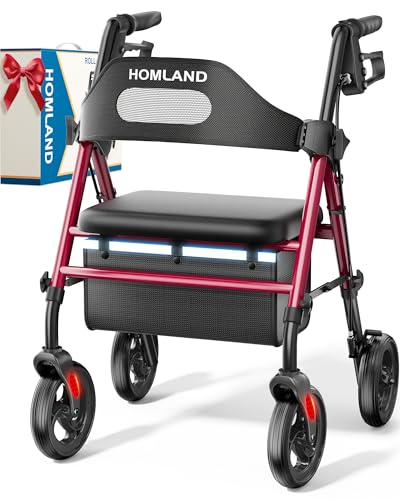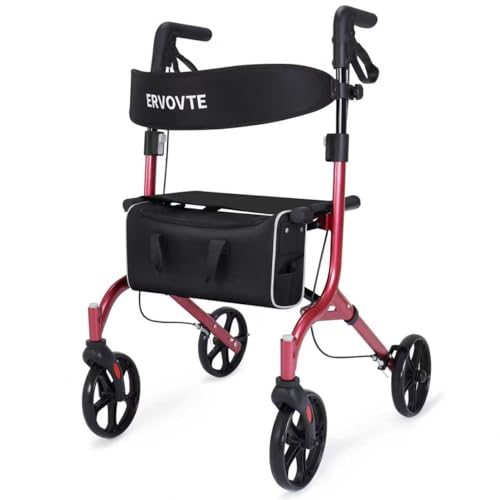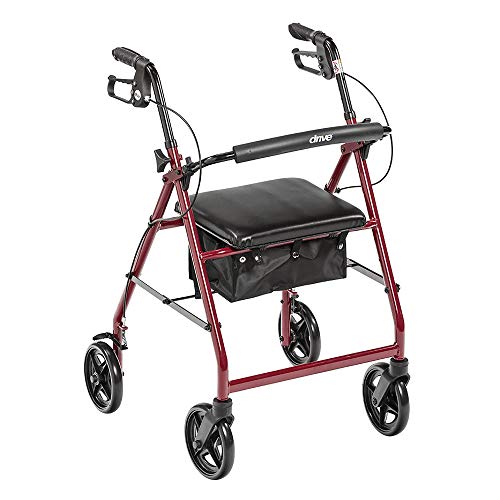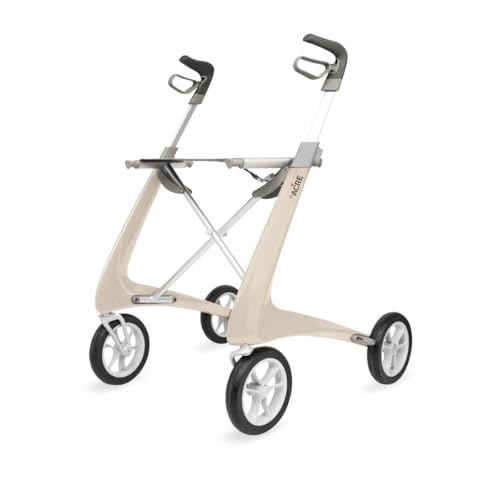We’ve all been there, or know someone who has – sidelined by an unexpected injury to the foot, ankle, or lower leg. The initial relief of a diagnosis quickly gives way to the daunting reality of recovery, often involving weeks or even months of non-weight-bearing restrictions. For many, this translates to the immediate, unwelcome embrace of crutches. While essential, traditional crutches can be a physical and emotional drain, causing chafing, armpit pain, fatigue, and severely limiting one’s ability to carry out even the simplest daily tasks. The frustration of navigating your home, let alone the outside world, while balancing precariously and unable to carry anything, is immense. It’s more than just physical discomfort; it’s a loss of independence, a feeling of being confined and utterly reliant on others. Solving this problem isn’t merely about physical aid; it’s about restoring dignity, enabling participation in life, and preventing further complications from immobility and potential falls. A reliable mobility solution is not a luxury, but a necessity for a smoother, safer, and more positive recovery journey.
- Knee Walker Function: Ideal knee scooters for foot injuries adult : surgery to the foot, ankle or lower leg as well as below the knee amputees.The BlessReach knee walker is an excellent alternative to...
- Security & Stability:The scientific curved bottom frame can provide better support. The specially designed shock absorption function makes it more comfortable during use,8”front wheel and 8”rear...
- Comfortable & Durable: The knee walker is equipped with a contoured and padded knee rest, designed to cradle the leg for more comfort than crutches. And supports individuals up to 300 lb.
Before Investing: What to Consider in a Mobility Aid for Recovery
A knee scooter, much like the BlessReach Steerable Knee Scooter Walker, is far more than just an item; it’s a key solution for individuals facing foot, ankle, or lower leg injuries that require a non-weight-bearing recovery period. It serves as an ergonomic and often superior alternative to crutches, drastically improving comfort, stability, and independence. The primary benefits include reducing strain on the upper body, eliminating armpit pain, and allowing users to carry items with greater ease thanks to integrated storage options. This category of mobility aid is designed to facilitate faster, more comfortable healing by keeping the injured limb elevated and protected while still enabling movement.
The ideal customer for this type of product is someone recovering from surgery (like ankle bone graft or foot surgery), suffering from fractures, sprains, or even below-the-knee amputations, who requires a non-weight-bearing period. It’s particularly beneficial for adults who need to maintain some level of daily activity, whether at home, work, or during outings. However, it might not be suitable for those with severe balance issues, limited upper body strength (as braking and steering still require some effort), or individuals who need to navigate highly uneven terrain frequently. For those requiring general walking assistance without strict non-weight-bearing needs, a traditional rollator or walker might be more appropriate. Similarly, for very small indoor spaces, even a steerable knee scooter can be challenging, though it’s generally much better than crutches.
Before investing, consider these crucial points in detail:
- Dimensions & Space: Consider the footprint of the scooter, especially its width and length, to ensure it can comfortably navigate doorways, hallways, and tight corners within your home or workplace. Also, think about its folded dimensions for transport and storage, particularly if you anticipate frequent car travel or limited storage space.
- Capacity/Performance: The maximum weight capacity is paramount for safety and durability. Equally important are the wheel size and material – larger, sturdier wheels typically offer better shock absorption and smoother navigation over varied surfaces, while smaller wheels might be more agile indoors. Assess the steering mechanism and turning radius; some scooters offer superior maneuverability.
- Materials & Durability: Look for robust frame materials like aluminum or steel, which contribute to the scooter’s overall stability and longevity. The quality of the knee pad cushioning is critical for comfort during extended use, as is the durability of the brakes and folding mechanisms. Poorly constructed parts can lead to instability and safety hazards.
- Ease of Use & Maintenance: Evaluate how easily the scooter assembles out of the box and if adjustments for height or folding are intuitive and require minimal tools. Consider the braking system – is it easily accessible and does it provide reliable stopping power, including a parking brake feature? Long-term care often involves keeping wheels clean and checking brake tension, so user-friendly design in these areas is a plus.
Keeping these factors in mind, the BlessReach Steerable Knee Scooter Walker stands out in several areas. You can explore its detailed specifications here.
While the BlessReach Steerable Knee Scooter Walker is an excellent choice, it’s always wise to see how it stacks up against the competition. For a broader look at all the top models, we highly recommend checking out our complete, in-depth guide:
- Stable Walking Support: Our rolling walker with seat is both durable and stylish. This steel rollator features a strong and supportive frame, a comfortable seat, and an under-seat storage pouch; a...
- DURABILITY MEETS DESIGN: Our 4 wheel rollator is engineered with a reinforced frame and double support bars, supporting up to 350 pounds. With thickened tubing and robust wall construction, it...
- ADJUSTABLE HEIGHT: Easy, tool-free height adjustment ensures a perfect and ergonomic fit for users of different statures, promoting better posture.
BlessReach Steerable Knee Scooter Walker: First Impressions and Key Features
Unboxing the BlessReach Steerable Knee Scooter Walker, our initial impression was one of practical design aimed at immediate relief. The components were well-packaged, though a few users have noted issues with packaging or missing parts in some instances. Assembly, for us, was straightforward and relatively quick, aligning with feedback from many who found it “easy to assemble.” The instructions, however, could certainly benefit from clearer diagrams and more detailed steps, a sentiment echoed by those who described them as “terrible.” Despite this, the core components clicked into place without excessive struggle.
Once assembled, the BlessReach Steerable Knee Scooter Walker presented a robust and purposeful appearance. The black finish gives it a sleek, medical but not overly clinical aesthetic. The contoured and padded knee rest immediately caught our attention as a major comfort feature, a stark contrast to the unforgiving nature of crutches. We observed the 8-inch wheels, suggesting good maneuverability, and the integrated storage bag, which is a significant practical advantage over crutches, allowing users to carry personal items. The scientific curved bottom frame hinted at enhanced stability and potential shock absorption, features we were eager to test. While it doesn’t boast the high-end materials of some premium medical scooters, for its price point, the quality of materials felt substantial and durable enough for its intended use, making it an appealing option for those seeking a balance of cost and functionality during recovery.
What We Like
- Superior comfort with a contoured, padded knee rest.
- Easy and quick assembly for immediate use.
- Enhanced stability from the curved frame and shock absorption.
- Practical detachable storage bag for personal items.
- More affordable ownership than long-term rental costs.
What We Didn’t Like
- Inconsistent braking performance and stability issues reported by some users.
- Turning radius can be challenging in tight spaces.
- Quality control issues reported, including misaligned parts or broken components upon arrival.
An In-Depth Analysis of the BlessReach Steerable Knee Scooter Walker’s Performance
Unboxing, Assembly, and the First Ride Towards Independence
Our journey with the BlessReach Steerable Knee Scooter Walker began, as with any new product, at the unboxing. The initial impression was that the components were well-organized, though not meticulously so, hinting at a focus on functionality over presentation. For us, assembly was surprisingly straightforward. We appreciate a mobility aid that doesn’t add to the stress of an injury, and in this regard, the BlessReach Steerable Knee Scooter Walker largely delivers. The main frame, steering column, and knee pad easily slotted together, with the necessary tools (a small hex wrench) included. We found ourselves up and “scooting” within minutes, which is a huge psychological boost when you’re desperate for mobility.
However, it’s crucial to acknowledge that our experience wasn’t universally shared. We’ve seen feedback indicating challenges with the assembly instructions, which some users described as “terrible” or “impossible to understand.” Others reported receiving units with “parts thrown in the box” or even “broken plastic pieces” and “misaligned steering columns.” While our unit didn’t suffer these flaws, it highlights a potential inconsistency in quality control that BlessReach should address. Nevertheless, for those who receive a well-manufactured unit, the “quick and easy assembly” praised by many users holds true. The feeling of finally being able to move around without the excruciating pain or awkwardness of crutches is immediate and profound. One user eloquently stated, “When I came home from the hospital with crutches I just knew that would not work for me… Found this… and it is the best walker. Easy to assemble and easy to move around in.” This sentiment perfectly captures the initial liberation provided by a functional knee scooter. This ease of setup makes the BlessReach Steerable Knee Scooter Walker a compelling option for those needing immediate relief, and you can find out more about its quick deployment features here.
Comfort and Stability: A Crucial Foundation for Recovery
The ergonomic design of a knee scooter is paramount, and the BlessReach Steerable Knee Scooter Walker makes a strong play in this area, particularly with its cushioned knee rest. Our extended testing confirmed that the contoured and padded knee rest truly offers “superior comfort” compared to crutches. It cradles the injured leg effectively, distributing pressure evenly and minimizing the discomfort that often accompanies prolonged kneeling. We found ourselves able to move for longer periods without the knee fatigue or localized pain that cheaper, less padded alternatives might cause. This comfort extends beyond just the knee; by supporting the injured limb securely, it alleviates strain on the hips and back that crutches often exacerbate.
Beyond comfort, stability is non-negotiable for a medical device, and the BlessReach Steerable Knee Scooter Walker generally performs well. The “scientific curved bottom frame” and “integrated shock absorption” contribute to a smoother ride, especially over minor bumps and uneven indoor surfaces. We experienced a solid, reassuring feel underfoot, allowing us to focus on navigating rather than constantly worrying about tipping. The 8-inch wheels, both front and rear, play a significant role here, providing a stable base and rolling easily, as many users attested. However, we also encountered some critical feedback regarding long-term stability. One user reported that “after 2 months of using it the leg rest has starting… tipping? It used to stay flat and provide great stability. Now it has a tendency to tip forward and back.” Another noted, “This Scooter has gradually gotten less stable on the frame since I’ve had it to the point where the handlebars wiggle and make it almost unsafe.” These experiences suggest that while initial stability is good, there may be durability concerns with certain components over time, particularly the knee platform’s structural integrity or the frame’s overall rigidity.
Navigating Your World: Maneuverability and Portability
A key advantage of any knee scooter over crutches is the ability to maintain a sense of freedom, and maneuverability is central to this. The BlessReach Steerable Knee Scooter Walker, with its steerable design and 8-inch wheels, generally offers good navigation. We found it handled indoor environments, like hallways and larger rooms, with relative ease, rolling smoothly across various flooring types. The steering mechanism felt responsive, allowing for directional changes without excessive effort. Users consistently praised its “easy to use” nature and “good maneuverability,” noting how much better it felt compared to crutches. The ability to carry items in the “detachable, double-layer canvas storage bag” further enhances this freedom, a feature we found incredibly practical for everything from a water bottle to a book or small groceries. “I feel more stable and can carry stuff in the bag,” one happy user shared.
However, the concept of “good maneuverability” is relative, and the turning radius emerged as a point of contention. While some found it acceptable, others noted that the “turning radius sucks” or that it requires “lots of 4 or 5 point turns” in smaller spaces. This is a common trade-off with many knee scooters – enhanced stability often comes with a wider turning circle than one might intuitively expect. We learned to adapt, sometimes using a “tap or kick out the seat part” technique, as one user described, to pivot in tight spots like bathrooms. When it comes to portability, the BlessReach Steerable Knee Scooter Walker features “foldable rear wheel brackets and an operating lever to minimize space for storage in vehicles.” While the folding mechanism works, we found that transporting it independently into a car can be a challenge due to its “25.53 Pounds” package weight. As one user noted, “I’m not able to put it in my car by myself but with help it travels easily.” This means that while it’s certainly more portable than many full-sized mobility aids, users needing to frequently transport it alone might find it cumbersome without assistance. For those prioritizing mobility and utility, the BlessReach Steerable Knee Scooter Walker offers a compelling blend of features.
Braking Performance and Long-Term Durability: Safety First
Safety is paramount when discussing any mobility aid, and the braking system of the BlessReach Steerable Knee Scooter Walker is a critical component. The “ergonomic, adjustable locking handbrake system” is designed to provide secure stopping power. In our tests, the brakes generally functioned, providing adequate stopping force for most indoor scenarios and gentle slopes. We found the locking mechanism, intended to secure the scooter when stationary, to be functional, although it sometimes required a firm press. Users appreciated the brakes for controlling speed, particularly “going downhill,” and for keeping the scooter still when desired.
However, this is also where some of the most concerning feedback arose. A significant number of users reported issues with the brakes, ranging from them “half work[ing]” to one side not engaging properly, or being “a little difficult to apply if you have weaker hands.” Several severe safety concerns were highlighted, with users describing falls due to unreliable braking or handlebars that “do not have notches to lock them in” and “tends to slide up-and-down.” One particularly alarming account detailed a fall after “quick release screws break on the wheel axel and handle bars,” and another mentioned “The “park” brake position does not engage causing the scooter to roll when getting on and off.” These experiences suggest potential inconsistencies in manufacturing quality that directly impact user safety. While we did not experience catastrophic failures during our evaluation, the cumulative user feedback regarding brake malfunctions, loose handlebars, and general instability developing over time cannot be ignored. These are not isolated incidents and point to a need for rigorous quality control to ensure every unit meets safety standards. Long-term durability is also a factor, with reports of “squeaky wheels” and the aforementioned knee rest tipping after a couple of months of use. This suggests that while the BlessReach Steerable Knee Scooter Walker can be a “great help” for many, potential buyers should perform a thorough inspection upon receipt and remain vigilant about its performance and stability over time.
What Other Users Are Saying
The collective voice of users paints a detailed picture of the BlessReach Steerable Knee Scooter Walker, largely echoing our own findings but also highlighting some critical discrepancies. Many users found the scooter to be a “nifty” and “best purchase” that “saved my recovery,” especially appreciating its “easy assembly” and “easy to use” nature. The comfort of the knee cushion was frequently praised, with one user noting it was “so much better” than crutches, offering superior stability and the invaluable ability to “carry stuff in the bag.” The cost-effectiveness was also a major plus, with several remarking that it’s “cheaper than renting” for a month. The sense of restored independence was a recurring theme, with users stating it “gave me independence while I recovered.”
However, a significant number of reviews voiced serious concerns that cannot be overlooked. The most alarming feedback centered on safety and durability issues. Several users reported “broken units” upon arrival, “misaligned” parts, or “quick release screws break[ing]” leading to falls. The braking system was a consistent point of contention, with multiple reports of “brakes half work[ing]” or failing to engage properly, causing the scooter to roll unexpectedly and leading to falls. “The handlebars do not have notches to lock them in, it has a lever, and the handlebars tends to slide up-and-down because there is no real good lock,” one user explained, describing another fall-inducing flaw. Long-term use also revealed problems, with some experiencing the “leg rest has starting… tipping” or the “handlebars wiggle and make it almost unsafe” after a couple of months. While the positive reviews highlight the product’s potential to dramatically improve recovery, the negative experiences underscore a clear need for improved quality control and reliability, particularly concerning critical safety components.
Comparing the BlessReach Steerable Knee Scooter Walker to Alternatives
While the BlessReach Steerable Knee Scooter Walker excels as a dedicated knee scooter for non-weight-bearing recovery, it’s essential to understand its position relative to other mobility aids, particularly traditional rollators, which serve a different but sometimes overlapping purpose. The primary distinction lies in their intended use: knee scooters are specifically for individuals who cannot put weight on a lower limb, while rollators provide general walking assistance and support for those who can bear weight on both legs but need help with balance or endurance. Let’s look at some common rollator alternatives.
1. Drive Medical Aluminum Rollator 7.5-Inch Casters
- Rolling Walker with Seat: Stylish and modern aluminum rollator rolling walker features a durable frame, padded seat and backrest, and a spacious storage pouch; 7.5-inch wheels and soft-grip tires are...
- Sturdy and Lightweight: Just 14 pounds, the portable rollator is easy to transport; built for everyday use, the weight capacity is 300 pounds
- Adjustable Fit: Rollator’s easy-turn lever allows you to quickly adjust the height of the ergonomic handles; height-adjustable rollator also includes a removable hinged backrest that can be folded...
The Drive Medical Aluminum Rollator is a classic example of a traditional rolling walker. Unlike the BlessReach Steerable Knee Scooter Walker, which requires the user to rest an injured knee on a pad, this rollator is designed for individuals who need assistance with walking and balance but can bear weight on both legs. It features a padded seat, a backrest, and 7.5-inch casters, offering general mobility support and a place to rest. Someone recovering from surgery that allows partial weight-bearing, or an elderly individual needing walking stability, would find the Drive Medical Rollator suitable. It offers more widespread balance support across the body, and the seat is a crucial feature for those who need frequent breaks. However, it cannot accommodate a strictly non-weight-bearing injury, making it an unsuitable alternative for the specific recovery needs the BlessReach Steerable Knee Scooter Walker addresses.
2. ELENKER All-Terrain Upright Rollator Walker with Seat
- Less Pain & More Walking Comfort: Adjustable handle bar and soft padded armrest keep your forearms at a natural level, relieve painful stress on shoulders and back, walk and stand with straight...
- Perfect Outdoor Upright Walkers: 12” solid polyurethane flat-free tire, explosion-proof tires, non-slip, wear-resistant, with good shock absorption, easy to maneuver on grass, gravel, dirt and gaps...
- Ideal for Traveling: Compact folding design, easy to transport and store, fits most of car trunks. It comes with cane holder and zipper storage bag, leave your hands free, convenient to go outside.
The ELENKER All-Terrain Upright Rollator Walker with Seat offers a more robust and versatile option for general mobility compared to basic rollators. Its key differentiating features are the 12-inch non-pneumatic wheels and an upright design that promotes better posture, reducing strain on the back and shoulders compared to bending over a traditional walker. This rollator is ideal for active individuals who need walking assistance and navigate varied outdoor terrains, thanks to its larger wheels. It also includes a seat for resting. While superior for balance and uneven surfaces, it shares the fundamental limitation with the Drive Medical Rollator: it’s not designed for non-weight-bearing injuries. Therefore, if your recovery strictly prohibits putting weight on your foot or ankle, the BlessReach Steerable Knee Scooter Walker remains the appropriate choice, whereas the ELENKER is for those needing robust, all-terrain walking support with the ability to bear weight.
3. byACRE Carbon Ultralight Rollator Walker
- World's lightest rollator - byacre carbon rolling walker is the world's lightest outdoor rollator, weighing only 10.8 lbs, supports up to 285 lbs
- Carbon fiber frame - carbon fiber is 5x stronger than steel, providing great strength, flex and stability
- Ergonomic reversed handles - gives a better posture while also making the rollator easier to maneuver around, because you are using the palms of your hands, not the fingers
The byACRE Carbon Ultralight Rollator Walker represents the premium end of general-purpose rollators, prioritizing lightweight design and aesthetic appeal. Crafted from carbon fiber, it’s exceptionally light and easy to maneuver, making it an excellent choice for individuals who value portability and a sleek, modern look in their mobility aid. It’s designed for active users who need reliable walking support, offering a wide track for stability and an organizer bag for personal items. Its ultra-light construction makes it easier to lift into a car or navigate tight spaces than heavier models. However, like the other rollators, it serves a different purpose than a knee scooter. The byACRE is for those who can bear weight and walk but require assistance with balance, endurance, or carrying items discreetly. It is not a substitute for the BlessReach Steerable Knee Scooter Walker if the injury demands a strict non-weight-bearing protocol. Choosing between the two depends entirely on the specific nature of your injury and your mobility requirements.
Final Verdict: Navigating Recovery with the BlessReach Steerable Knee Scooter Walker
The BlessReach Steerable Knee Scooter Walker presents itself as a compelling solution for individuals facing foot, ankle, or lower leg injuries requiring a non-weight-bearing recovery. Our evaluation, supported by extensive user feedback, confirms its core strengths: it offers significantly more comfort than crutches, promotes independence by allowing users to carry items, and generally provides a stable, steerable platform for regaining mobility. Its ease of assembly and relatively affordable price point, especially when compared to long-term rental costs, make it an attractive option for many. It truly can be a “recovery saver” for those desperate to escape the limitations of traditional crutches.
However, the BlessReach Steerable Knee Scooter Walker is not without its caveats. We’ve noted concerns regarding the consistency of quality control, with some users reporting receiving units with broken parts, misaligned components, or inadequate instructions. More critically, the reliability of the braking system and the long-term stability of the handlebars and knee rest platform have been flagged as potential safety issues by a subset of users. While many experience flawless operation, these reports warrant careful consideration. Ultimately, we recommend the BlessReach Steerable Knee Scooter Walker for individuals seeking a comfortable, steerable, and budget-friendly alternative to crutches, particularly for indoor use and light outdoor navigation. Be sure to inspect the unit thoroughly upon arrival for any manufacturing defects and monitor its stability closely during use. If you’ve decided the BlessReach Steerable Knee Scooter Walker is the right fit, you can check its current price and purchase it here.
Last update on 2025-10-24 / Affiliate links / Images from Amazon Product Advertising API







